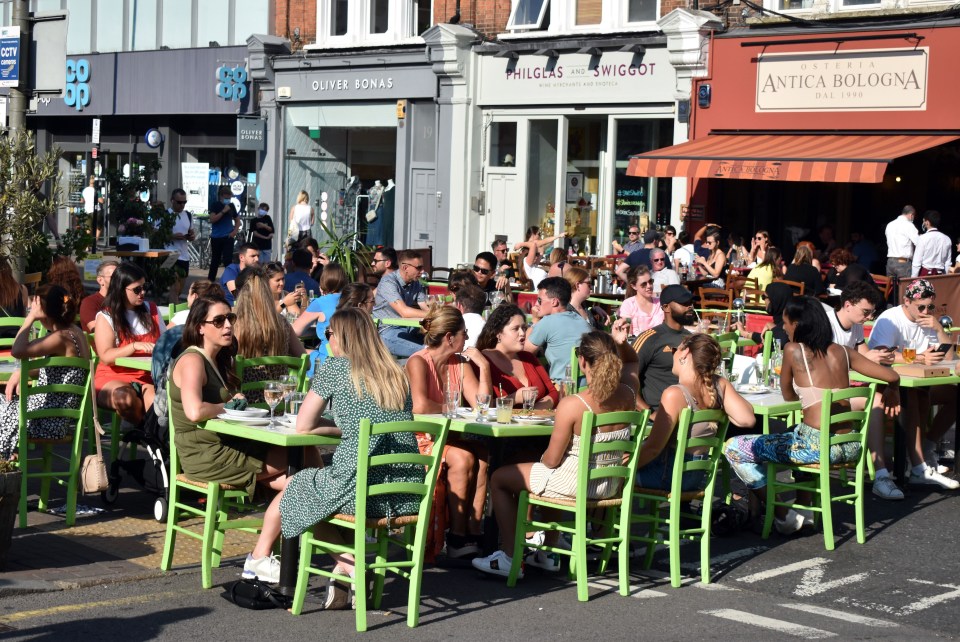CORONAVIRUS will continue moving down the north east coast in the coming weeks, with outbreaks growing in the Midlands and London, experts say.
Researchers from Imperial College London say future hotspots will include Hartlepool and Scarborough, with both places fighting surging cases by early October.
⚠️ Read our coronavirus live blog for the latest news & updates
After that, Darlington, Stockton-on-Tees, Redcar and Cleveland, Hambleton and Middlesbrough will face a spike in infections, the experts believe.
None of the seven authorities have yet been hit by tougher restrictions.
However, officials classify them as 'areas of concern'.
It comes as:
- Sir Patrick Vallance today warned the UK faces 50,000 new daily cases of coronavirus by the middle of October
- Cases of coronavirus rise throughout the country
- The PM plots a Covid rules "enforcement blitzkreig" tomorrow, with eateries and bars to be shut down by patrols if they allow punters to flout the "rule of six"
- And people living in England could face bans on seeing their family, friends and lovers in other households again in fresh lockdown measures
- Prince Harry called the virus 'devastating' in a message broadcast from his LA mansion
- Another 4,368 people have tested positive for Covid overnight in the UK
Last week, health chiefs put more than two million people in the north east under local lockdown rules.
Residents are banned from socialising indoors or in gardens with anyone from outside their own households or support bubbles.
Pubs, bars and restaurants in all the affected areas — Northumberland, North Tyneside, South Tyneside Newcastle-upon-Tyne, Gateshead, Sunderland and County Durham — must now shut between 10pm and 5am, effectively putting a curfew on the region.
How do researchers predict hotspots?
Researchers say they can predict where the UK's future hotspots will be
Imperial researchers led by Professor Axel Gandy recently launched a which estimates the probability that a location in England will be struck down with high Covid-19 cases, based on current data.
The team behind the website define a hotspot as a local authority where there are more than 50 cases of Covid-19 per 100,000 of the population per week.
Imperial report the probability that a local authority will become a hotspot in a percentage - 100 per cent being almost certain.
Researchers say high infection rates seen in parts of Northumberland, North Tyneside, South Tyneside, Newcastle-upon-Tyne, Gateshead, Sunderland and County Durham will move south into other parts of the North East and Yorkshire.
Hartlepool in County Durham is 91 per cent likely to become a hotspot this week.
Other areas highlighted are:
- Stockton-on-Tees, 73 per cent
- Redcar and Cleveland, 68 per cent
- Darlington, 63 per cent
- Scarborough, 87 per cent
- Hambleton, 71 per cent
- Middlesbrough, 51 per cent
And tonight, it was revealed that the Prime Minister plans to extend that 10pm curfew to every pub in England.
It comes amid warnings that cases of coronavirus are rising across the country, and are no longer confined to local outbreaks.
Addressing the nation this morning, Chief Medical Officer Chris Whitty revealed new maps which show the transmission of the virus across England.
He referenced two maps that revealed the spread of the virus in England and said the result was similar for the rest of the UK.
He said: "Now what we are seeing is a rated increase across the great majority of the country, it's going at different rates but it is now increasing.
"What we have found is that as we go through in time, anywhere which was falling is now moving over to beginning to rise and the rate of rise continues in an upward direction.
"This is not someone else's problem, this is all of our problem."
He added that as winter approaches the "seasons are against us".
Prof Whitty added that there was "no evidence" that suggests that the virus is a milder strain now than than seen at the peak of the pandemic in April.
Mortality rates from Covid-19 are "significantly greater" than seasonal flu, which killed around 7,000 annually or 20,000 'in a bad year', the expert added.
And Sir Patrick Vallance, the UK's top scientist, also warned Britain could face 50,000 coronavirus cases a day by the middle of October without new lockdown measures.
He added: "At the moment we think the epidemic is doubling roughly every seven days.
Where will be the next Covid hotspots?
The following areas are more than 75 per cent likely to become a hotspot in the week September 27 to October 3:
1. Wyre, Wales
2. South Ribble, North West
3. Scarborough, Yorkshire and the Humber
4. Rotherham, Yorkshire and the Humber
5. Walsall, West Midlands
6. St Albans, East of England
7. East Lothian, Scotland
8. Derry City and Strabane, Northern Ireland
9. York, Yorkshire and the Humber
"If, and that's quite a big if, but if that continues unabated and this grows doubling every seven days... if that continued you would end up with something like 50,000 cases in the middle of October per day.
"50,000 cases per day would be expected to lead a month later, so the middle of November say, to 200-plus deaths per day."
Meanwhile, coronavirus rates in 20 London boroughs are higher than in areas of England where local lockdowns apply, new data reveals.
Public Health England's most recent watchlist shows the authority in England with the lowest case rate considered an 'area of intervention' - the highest degree of concern - is Ribble Valley.
Most read in News
The Lancashire borough has 18.3 cases per 100,000 people.
Read More on The Sun
But Kensington and Chelsea, Enfield and Southwark, among others, have infection rates higher than that.
Currently, the three worst-hit areas in London are Redbridge - with 34.2 cases per 100,000 people, Hounslow with 32.5 cases and Dagenham with 29.3 cases.

















